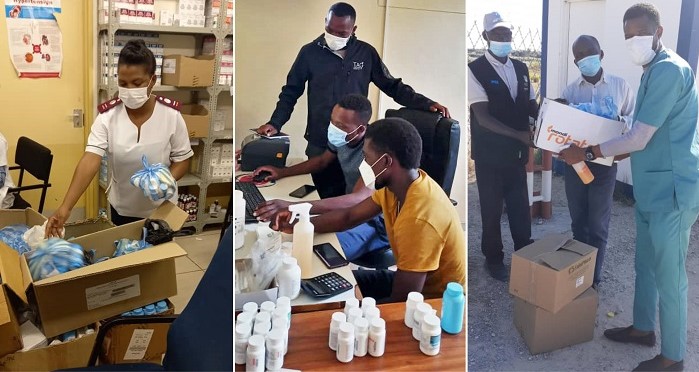
A silent movement of HIV/AIDS patients takes place between the Angola-Namibia border. Some 4,000 Angolans in remote areas of the country where antiretrovirals (ARVs) are hard to come by seek and receive ARV treatment (ART) in Namibia’s Kavango East and Kavango West regions. In turn, Namibian health facilities regularly ensure Angolan’s access to ART as part of their commitment to the global HIV/AIDS goals for epidemic control.
The onset of the pandemic last year added a layer of difficulty, however. The closure of borders and restriction of movement to prevent the spread of COVID-19 greatly restricted Angolans’ access to ART services in Namibia.
“We already have them on our records,” explained Sister Annastasia Siremo, Senior Registered Nurse from the Ministry of Health and Social Services (MoHSS) Rundu District Office. “Despite the challenges posed by COVID-19—such as restricted movement between borders—through coordinated efforts we have ensured that they receive medication on time to maintain continuity of treatment.”
The process begins with Angolan and Namibian health workers communicating through phone calls and WhatsApp to exchange patient information. Angolan health workers check patients’ basic health parameters and record them on “health passports.” After collecting a large batch of health passports, they notify their Namibian counterparts and arrange a time to meet at the Angola-Namibia border post to deliver them. Using the health passports, the Namibian health workers dispense ARVs and return to the border within a week to deliver the medicines to their Angolan counterparts, who in turn distribute them to their ART clients.
“The situation of the Angolan patients has also necessitated us to scale up on the ART multi-month-dispensing, as most of these patients now receive three to six months of medication,” Sister Siremo added.
These efforts start with accurate data. The USAID Global Health Supply Chain Program-Procurement and Supply Management (GHSC-PSM) project team based in the Kavango regions have played a key role in supporting the cross-border solution by mentoring the regions’ health facilities on providing accurate and timely data that is critical for decision making at the national level. The project makes sure that two pharmaceutical management systems for managing ART stock and patients’ records work efficiently and effectively. These systems, including the Electronic Dispensing Tool for ARV patients and the Facility Electronic Stock Card for inventory management, are in turn used to inform the supply chain.
By leveraging the available data—long before patients in Angola receive their ARVs—GHSC-PSM works with Namibia’s central medical stores to make decisions about the quantities needed to support multi-month dispensing across the border in Angola’s public health facilities in Kavango East and Kavango West regions. During a year marked by great uncertainty, both countries along with their health workers are committed to provide Angolan patients with an uninterrupted supply of ARVs.